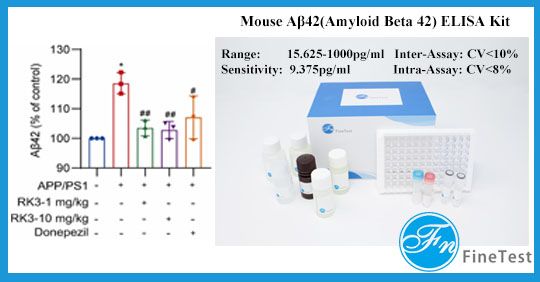Abstract: Alzheimer's disease(AD) is the insidious neurodegenerative disease characterized by dysmnesia, anepia, apraxia, agnosia, visuospatial skill damage, executive dysfunction etc. AD may be a group of heterogeneous diseases affected by biological and social-psychic factors. The research shows there are over 30 possible factors and hypotheses, such as family history, female, head trauma, low educational level, thyroid disease, lower or higher childbearing age, viral infection etc.
Keywords: Alzheimer's Disease Detection, CSF Biomarkers for Alzheimer's Disease, PET Scan Alzheimer, Test to Determine Alzheimer's
1. Alzheimer's Disease Detection
Currently, there are two early detection methods: PET scan and cerebrospinal fluid (CSF). PET scan can observe tangles between β amyloid and tau protein. Key CSF biomarkers include Aβ42, total tau and P-tau proteins.
Recommended Antibodies
- 【FNab08505】anti- TAU antibody
- 【FNab10118】anti- TAU antibody
- 【FNab10900】anti- Phospho-Tau-T181 antibody
- 【FNab10924】anti- Phospho-TAU(S396) antibody
- 【FNab10925】anti- Phospho-TAU(S404) antibody
- 【FNab10926】anti- Phospho-TAU(T231) antibody
- 【FNab10927】anti- Phospho-TAU(T205) antibody
- 【FNab10440】anti- Aβ42 antibody
2. CSF Biomarkers for Alzheimer's Disease Diagnosis
NFL is the marker for neuroaxonal damage. The increase of NFL concentration in CSF and blood is mainly found in amyotrophic lateral sclerosis(ALS), frontotemporal dementia(FTD), atypical parkinsonism, disseminated sclerosis(MS), and HIV-associated neurocognitive disorder. NFL level in AD patients' CSF and plasma increases.
Recommended Antibodies
3. BDNF and Alzheimer's Disease
Many evidences show synaptic plasticity disorder is one of the pathogenic factors for AD. BDNF can effectively regulate synaptic plasticity and improve cognitive function. The relationship between BDNF and AD has been widely concerned.
Recommended Antibodies
4. BACE1 in Alzheimer's Disease
BACE1 is a transmembrane protease, which catalyzes amyloid precursor protein(app) to form the first step of β-amyloid peptide. β-amyloid peptide is the main component of amyloid-β plaques and accumulates in AD patients’ brain. BACE1 with higher concentration and enzyme activity is found in human AD brain extract.
Recommended Antibodies
5. Cited FineTest Product
| FineTest Product | Sample | Detection Target |
| Mouse Aβ42(Amyloid Beta 42) ELISA Kit (EM0864) | hippocampal lysates | Aβ42 |
| Mouse Aβ40(Amyloid Beta 40) ELISA Kit (EM0863) | Aβ40 |
Publication Details
Article Title: Ginsenoside Rk3 ameliorates Aβ-induced neurotoxicity in APP/PS1 model mice via AMPK signaling pathway
Journal Title: Biomedicine & Pharmacotherapy
DOI: 10.1016/j.biopha.2022.114192
IF: 7.419
PMID: 36587558
Validated Image

Figure Source: Biomed Pharmacother. 2023 Feb;158:114192. doi: 10.1016/j.biopha.2022.114192.
Fig. 5. Aβ42 level in the hippocampus was determined using ELISA kit.
REFERENCES
[1]Biomarkers for Alzheimer's Disease Diagnosis, PMID: 28164766.
[2]Current opinion neurology: visual pathway biomarkers in Alzheimer's disease, PMID: 31809334.
